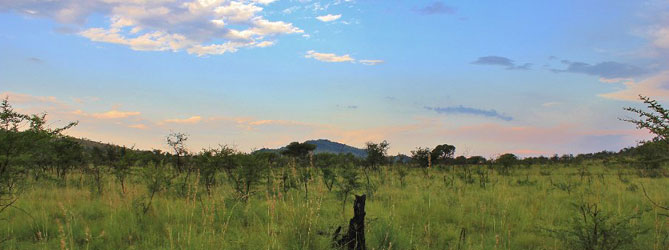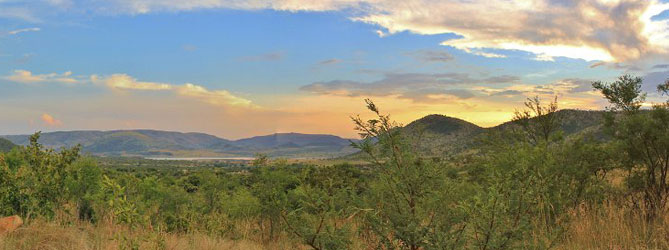Vegetation in Pilanesberg
Mountain Aloe: This is a tall, single-stem tree. The leaves are fleshy, blue-grey in colour with small spines. The yellowish sap gathered from the leaves is used for stomach illnesses. The flowers are tubular in shape, and appear between June and August.
Cape Chestnut: This tree has a fertile flower display. When growing in the forest, it can reach 20m. In cultivation, it can reach 10m. The trunk is smooth and grey. The leaves are 22cm long and 10cm wide. Cape Chestnut oil is extremely popular in African skin care.
Marula: This is also a single-stem tree, with grey and mottled bark. It grows to about 18m. Marula fruit has eight times more vitamin C than an orange. The bark is used to treat malaria.
Red Ivory: This tree is evergreen and drought resistant. It reaches a height of 15m. The bark is grey/brown, with corky dots on the branches. The blue/green leaves are of a thin texture. Flowers are yellow/green-white in colour, and grow between September and December.
Camphor Bush: It is well suited to tough conditions. It grows in bushveld, grassland, semi-desert and forest. It can grow between 2-9m. The bark is pale brown. Leaves are green on top and pale grey underneath, with a felted texture. The Camphor Bush produces creamy white flowers. The fruit is covered with fluffy hairs, and can be found between March and November. Inhaling smoke from the burning leaves relives blocked sinuses and headaches. Drinking a boiled mixture of leaves and water will aid in treating coughs, bronchitis and toothache.
Wild Seringa: A medium-sized, flat topped tree which is not yet commercially produced. It grows approximately 8m in height. The leaves are silvery and 100-350cm long. The creamy white flowers have a very pleasant and strong fragrance. The bark is toxic, and used for making mortars. Roots of the tree are used to treat stomach pain and toothache.
Magic Guarri: Small tree found in thorn scrub, hillsides, river banks and woodland. The bark is light grey and smooth. The round and fleshy fruit becomes purple/black when mature, but is not pleasant in taste. The fruit can be used as a laxative, and to ferment beer. The fruit produces a pink ink, and the bark a brown ink. The frayed end of a Magic Guarri twig can be used as a toothbrush. Leaves are used to improve appetite, and to smoke pork.




